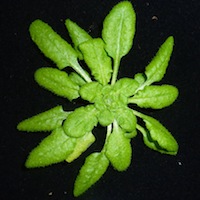GARNet news
Lisa and I went to the Brassica Growers Association Conference on Tuesday. I wrote two posts on it over on the UK-BRC website, and Lisa put together a very informative Storify of tweets on the #BGAconference stream.
The UK Plant Sciences Federation has been collecting opinions, facts and data for the past year or so and is now ready to launch a report entitled UK Plant Science: Current Status and Future Challenges. Lisa and I helped out with this report so keep an eye out for it on Tuesday and let us know what you think!
I went to the SEB Synthetic Biology conference last week and have written a short report for the SEB Bulletin about it – I’ll share it when it is published. There was some excellent plant science there. Antonio Scialdone presented the plant-arithmatic work from Martin Howard’s lab – you can read his open access 2013 paper modelling starch degredation over night here (Scialdone et al., eLife 2013;2:e00669). Oliver Ebenhoeh discussed how mathematical models for photosynthesis and plant metabolism can help synthetic biology be done in plants and other photosynthetic organisms.
On the GARNet website
If you missed some January funding deadlines, there are plenty more opportunities to submit your proposal – take a look at the funding round-up on our website for ideas for fellowships, travel, collaborations or straightforward research grants.
Lisa is continuing to write her weekly Arabidopsis research round-up, which you can find on the GARNet news pages. It’s the best way to keep informed of what fellow UK Arabidopsis researchers are up to. This week, papers from GARNet committee members Heather Knight and Cyril Zipfel feature.
Your chance to present your work
PlantSci 2014 is in York on 31 March/1 April, and abstract submission is open until the end of February. There are two £200 cash prizes to be won by early career researchers giving short talks, so make sure you submit an abstract! There won’t be a traditional poster session, but delegates are invited to bring mini-posters to discuss during the networking sessions. Abstracts for the mini-posters will be included in the abstract book.
Further away in September, GARNet 2014 is your second chance to present your work at either a poster session or as a short talk. Registration and abstract submission are both open, and news about special opportunities for students will be coming very soon.
Finally, I’ve been reliably informed that the FSPB/EPSO Plant Biology Conference organisers are looking for proposals for short talks for the Big Data in Plant Science session, so if you’re planning on going and do ‘big data,’ think about submitting an abstract!












